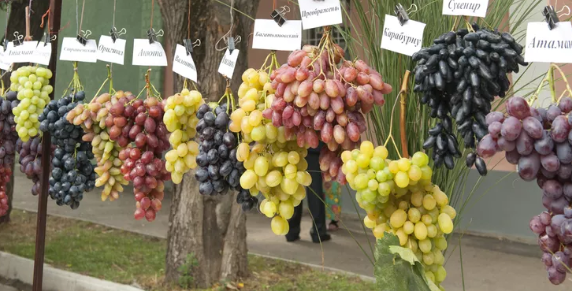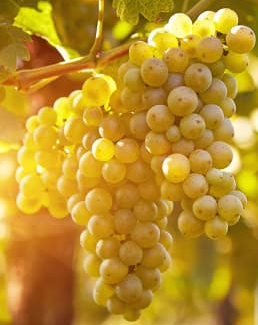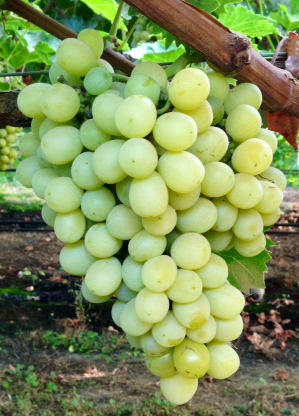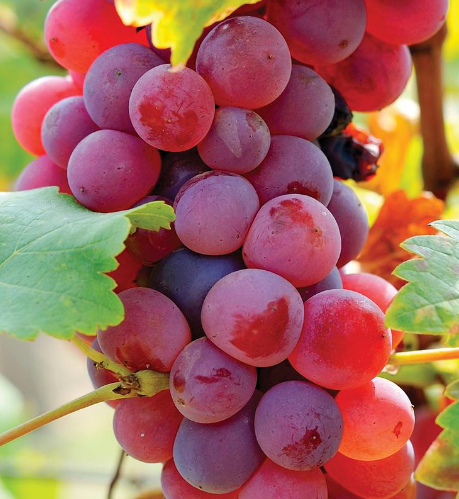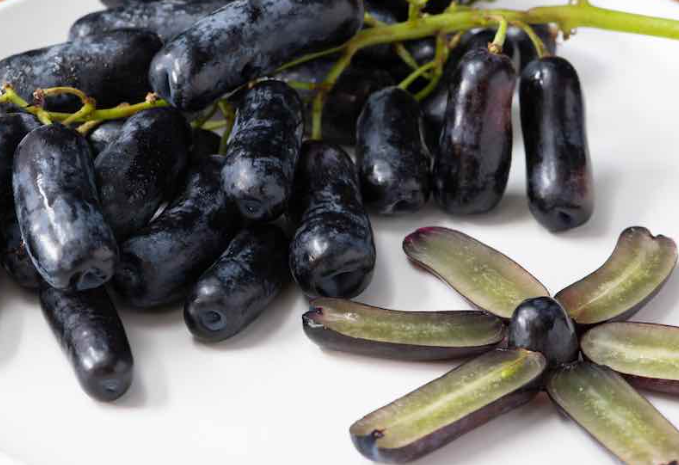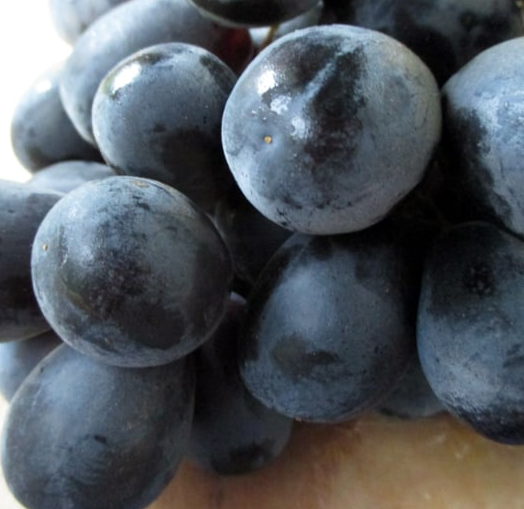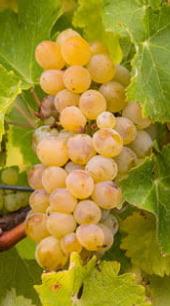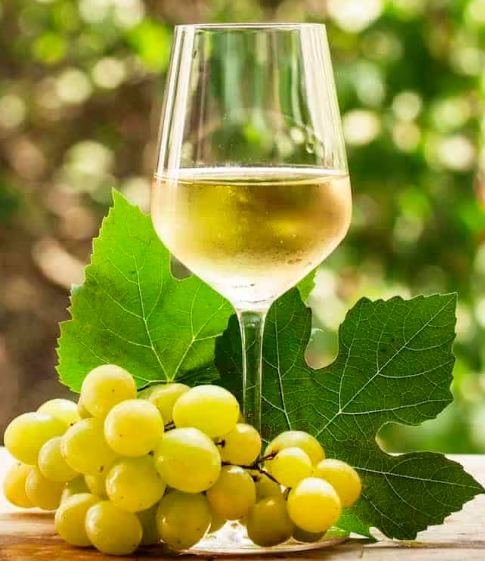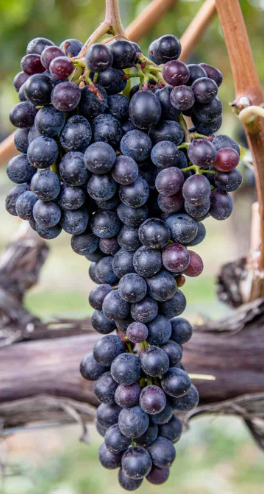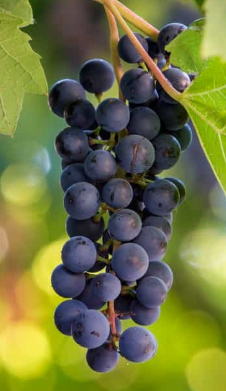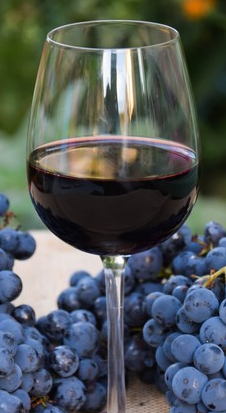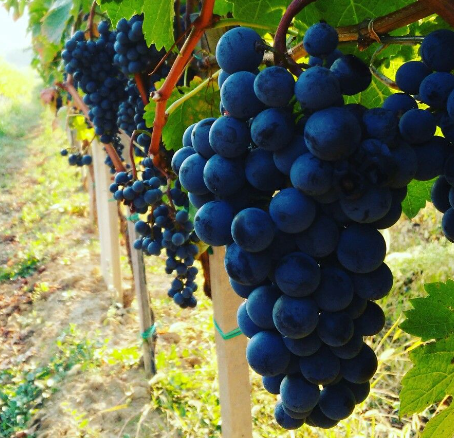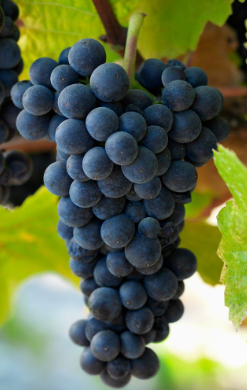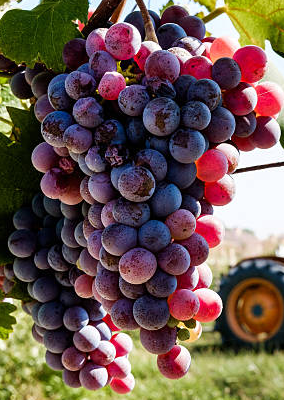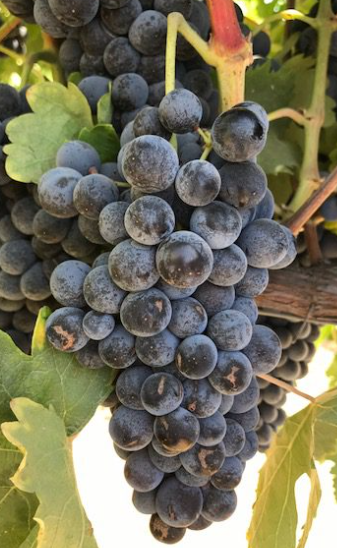Grapes Galore & so much more…These are some of our favorite fruit snacks as a child. They were easy to carry outdoors and anywhere else we may go. Pop them in your mouth, with a juicy sweet taste as you bite into them. I loved them then and now well into adulthood. They pack a powerful taste. And these sweet treats as raisins in cookies were the best. Remember those little tiny boxes of raisins that were hard to get out the last few at the bottom. All still good today! And what about the jellies that go on the PB&J sandwiches? And as we got older the fine wines were even finer. So good…I decided to write about the different varieties and how they are used. Even more, the benefits that grapes give us.
Grown in clusters on grapevines, Grapes are berries of the Vitis Genus in the family of Vitaceae. They are small oval fruits containing skin, flesh and seeds. They are used for eating as they are, as well as making jams and jellies, juices and let’s not forget my favorite, winemaking. Also known for their nutrition source of Potassium, Vitamin C, and Vitamin K with other health benefits too. You can check out the specific benefits grapes have to your health towards the bottom of this page.
Continuing on, grapes come in a variety of colors, sizes, dietary and unique qualities. And, they even have some seedless varieties. Among some of the most popular fruits, they are available throughout the year. I don’t know anyone that hates grapes! And don’t forget about those raisins too! Just thinking of all the recipes that have been created with grapes in mind?
How Do You Want Your GRAPES Galore?
Whether you eat them right from off the vine, or you have them in your favorite jams or jellies, great in salads, grapes are a versatile fruit! And, they can even be artistically blended in the most fabulous tasting of all natural wines…God ever created!
So, I decided to describe some of those varieties you may or may not have heard of, along with some information on each of them. Then, you can choose your favorites. Or, simply use the information for Game Night with friends and family to impress. Maybe you’ll find a new favorite to try. Check them all out below;
Grapes Galore Types ~
Choose your type. what kinds do you like? There is so many to choose from though. From yellow to red to green to purple and even black grapes, all with different sweetness and crunch levels. So I started with table grapes and then added those wonderful wine grapes to the list here. Some you know and others maybe not so much.
~ Table Grapes
Autumn Royal grapes are seedless sweet grapes. They were created by David Ramming and Ron Tarailo who crossbred them in Fresno, California in 1996. These have become more popular due to their texture, flavor, size and especially that it’s seedless. It’s crunchy with a dark purple skin and bright yellowish flesh inside. It just sounds yummy!
Centennial are white grapes with yellow skin and are among the largest varieties. Mostly, you’re grabbing these off the vine from the bowl on the table or from the fridge. Or, you may be popping raisins in your mouth for a quick snack! These seedless beauties have been eaten by most of us at some time in our lives. I usually have them in the summer as table grapes and in cookies around the holidays as raisins. Very yummy! Also, these were actually developed at the University of California in 1966 by Harold P. Olmo. Amazing, right!
Champagne grapes really have nothing to do with the real champagne drink. Though, they go by other names such as the Zante currant (not a real currant) or the Black Corinth. Weird, I think! Although they are grown mainly in the US and Europe; researchers believe they originated from Greece or somewhere in Asia. These particular grapes are black, seedless and small, that of the size of a pea and are rarely used in wines. When eating these delights, they crunch when biting down on the skin, followed by very sweet and tender juices. Sounds like one to try!
~ Table Grapes Galore
Concord grapes are the Most Common type of grape in the world. It is known for its iconic hue of purple and blue combination, resembling a jewel. It was developed in 1849 by Ephraim Wales Bull from Concord, Massachusetts. And, by 1869 was producing juices. And these beauties are loaded with flavonoid antioxidants and phenolic resveratrol. But what is really exciting is the fact that these are the most versatile grapes used for; making juices, wines, snacks, jellies, jams, desserts and more. The grape flavor and fruity aroma is the best just by popping it in your mouth and chewing…
Cotton Candy grapes have that sugary taste like the carnival treat you remember as a child. And maybe an adult, like me. I love cotton candy! Anyway, these seedless grapes originated in California & have been a local specialty since 2011.Their candy floss lightness and sweetness is due to the unique hybridization process the grapes go through. And they have a luscious green skin color. Although they may taste like candy, these grapes are actually high in fiber, potassium, and Vitamin C. Only downside…it’s high sweetness level. I still want some. I wonder if they can ship them?
UPDATE; I recently got the chance to try these. I was out with my family and stopped at the local open market. They had some, so of course I had to try them. They were delightfully sweet like cotton candy, really. Hope they have them again next year!
~ More Table Grapes Galore
Crimson are crisp cracking, sweet and juicy, slightly elongated, light-red seedless grapes. A plant breeder in California back in 1989 brought out this varietal. Many consider these the ultimate teatime snack or breakfast item. And, these grapes are incredibly healthy for our bodies. Also, they contain Anthocyanins (water-soluble pigments), which produce a group of antioxidants found in red, purple, and blue fruits and veggies.
Dominga grapes are another common table grape which grows on vines in massive clusters. However, these large round bodied gems are only one of three yellow grape varieties. And farmers really like them because of their easy growing process. More importantly, these have the most quantities of polyphenol antioxidents than any other grape. This is great news for your heart, as well as keeping your brain on par by providing neuro-protective effects. Amazing to add to your diet to stay healthy & happy!
Flame Seedless grapes are hugely popular due to their delicious taste and bright red color. They are available in large clusters and are conveniently found in many grocery stores. These also can be grown in your own backyard too. This grape variety is one of the most nutritional. It is rich in anthocyanins; meaning its plant pigments act as powerful antioxidants. They protect your cells from oxidative stress damage. And the fruit’s skin & flesh protect your liver tissues from cellular damage too.
~ Even More Table Grapes Galore
Koshu grapes are native to Japan and possibly the most popular, grown in the Koshu Valley in the town of Yamanashi Prefecture. They are considered to be a hybrid that was created most likely by nature. And, they are eaten as finger foods, while also used to make wine. They are tart and acidic. However, the white wine has a soft, fruity and aromatic bouquet with overtones of citrus, peach and jasmine. It lends well to Japanese cuisine.
Kyoho grapes are the most like Concord grapes, even though they come from totally different regions. As they both have a dark purple hue. However, the Kyoho has a very thick and tough skin, but can be removed easily. And they are a hybrid of the Centennial grape and a variety of the Ishihara Waze, popular in Japan, Taiwan, and mainland China. These grapes are huge and each one can weigh a half ounce. Traditionally, they are served peeled as a dessert or, the juice is used to make chūhai cocktails.
Marquis grapes are large white grapes that are seedless. In 1966, Cornell University of all places, began to create a hybridized grape. Crossed between a seedless Emerald grape and an Athens grape. These are best as table grapes or used to make jams. These are a hardy variety that can withstand cold, as well as various soil types. And, due to their large flowers, amazing fragrance, and easy pollinators, they are a popular grape for home gardeners.
~ Much More Table Grapes Galore
Moon drops are a seedless blackberry colored table grape and look like mini eggplants. They have a unique oblong shape and taste lightly sweet as you crunch on them. Of course, you feel like it’s an aristocratic snack with the many ways you can eat them. Whether inserting fillings, or roasting for salads, this versatile snack grape is awesomely delicious. And yes, I’ve tried these, simply scrumptious! And they look like mini eggplants too. Moon drops are grown in the San Joaquin Valley in California and really thrive there. You definitely need to try these special grapes!
Red Globe Grapes are available all over the globe! Most popular in Asia. These are actually red in color, only among a few. And they are extremely large seeded grapes. They have a firm crispy inner flesh and are best eaten cold, as they are so very refreshing to eat. These grapes are used in making raisins, jams and jellies. I actually recently bought some of these to try and forgot they had seeds in them. So, since I have to cut them up to remove the seeds to eat, I would try them in chicken salad.
Reliance are rose-colored grapes. Both sweet and juicy, they are usually best for jellies and jams. But can be eaten straight off the vine! These grapes are also used in Rose’ Wine making too. It gets its name from being very resistant to most diseases and more extreme climates, just reliant. It’s hardiness and easier to grow, makes this a go-to for the novice. And, this grape is usually seedless.
~ The Most Table Grapes Galore
Somerset are seedless large, red grapes. They are cold-hardy, self-pollinating and best of all their resistance to most diseases. These are best when eaten fresh and can be used to make jam or jelly. Considered the hardiest for Northern Gardens, they are sweet with a firm crisp texture with the flavor of strawberry.
Sweet Jubilee is a very large purple blue-black grape, larger than most. These are sweet, firm and juicy. You can even grill these and are perfect to cut up in salads. They have a central seed, which easily pops out when preparing. Sweet jubilees are great in culinary dishes, as well as just popping them into your mouth and enjoying them as a great snack.
Thompson Seedless (originally known as Sultana Grapes) A small table grape produced mostly for raisins. They are white or pale green in color and very sweet due to their high sugar content. They have thin skin and are very juicy too. Also the high sugar content in these grapes have been made into white wine on occasions. Originated in the USA.
~ Wine Grapes (white)
Chardonnay are white wine grapes that grow all over the world. They began their journey in Eastern France in the Burgundy wine region. But, because they are relatively easy to cultivate and they adapt well to various conditions, the rest of the world was their oyster and so they spread. Of course, including California. But other states got in on it too, mostly the mom and pop vineyards. Wines made from these grapes range from steely & acidic to lush, buttery, and spicy, mainly depending on the region it’s coming from.
Moscato or Muscat is one of the oldest grapes in France. And, it’s been around since ancient times and was planted along the Mediterranean Coast. Also, it has a very distinguished fruity bouquet, no matter where it comes from. Perfumed floral notes of orange blooms & rose petals are quite apparent. This wine is usually sweet on the palate, but balanced with zesty acidity. It pairs really well with charcuterie boards. It’s also used in making sparkling wine too. And, this is my favorite wine due to the sweeter taste and who doesn’t like a charcuterie spread! It pairs so well too.
Pinot Noir (see Wine Grapes ~ red)
~ More Wine Grapes Galore (white)
Pinot Grigio are white wine grapes. They grow in northern Italy in the region of Veneto and are produced in the French tradition. The wine is usually crisp, citrusy and dry. And, in the French tradition they call this grape, Pinot Gris. Theirs is sweeter and can have a higher alcohol content.
Reisling grapes are German in origin in the Rhine River region. These grapes produce crisp, highly acidic, fruity white wines. Riesling can be made in a variety of ways by winemakers, from dry to sweet, including sparkling wines. Petrol, lime, slate, and honeysuckle are common tasting notes.
Sauvignon Blanc is a white wine grape coming from New Zealand and the Loire Valley in France, since about 1534. It also is very versatile as it pairs well with many foods, due to the many different places these are grown and the flavors picked up by those locations. However originally it has notes (or aromas) of grass, gooseberry and grapefruit. It is sometimes considered the Pinot Noir of the whites.
~ Wine Grapes (red)
Cabernet Franc is a red wine grape, growing in France’s Loire Valley, the Bordeaux regions, as well as New York’s Finger Lakes. This black grape is world renowned and used in many blends with Cabernet Sauvignon and Merlot. It is a medium high acidity & tannin with flavors of bell pepper, graphite, and red cherry.
Cabernet Sauvignon is also a red wine grape, growing in France’s Bordeaux wine region and California’s Napa Valley. Facts about the Bordeaux wine making dates back to the ancient Romans when the poet, Auonius, described the Gironde Riverbanks overgrown with grapevines. These wines have black currant, mint, and bell pepper flavors and are full-bodied. Also, when used in a blend, cabernet sauvignon dries a sweet wine.
Lemberger grapes, also known as Blaufrankisch, are used for making dry, tannic wines. They are a dark-skinned variety used for red wines and found originally in eastern Austria, as well as throughout central Europe. The most common wine in Austria and has been thought to be around since the Middle ages. Its notes have flavors of black-fruit and a hint of peppery spice.
~ Wine Grapes Galore (red)
Black Muscat grapes were created from crossbreeding Alexandrian Muscat and Trollinger Grapes and have been around since the 1800’s. The various forms of these grapes make perfect crafting wines for dry reds and dessert wines. These have an iconic aroma that’s unforgettable. These grapes have a bluish-black color combination. And they pair well with many foods, especially cheeses and foods high in salt. Also, good to know that these make great table grapes too. Maybe moreso. Now, in Italy it is the Moscato that’s created with grapy aromas along with floral and spicy notes.
Trollinger grapes are mostly blue skinned and moderately acidic, while producing light bodied wine. It creates a red wine with a fruity strawberry and subtle smokey notes, giving off spices and pepper notes too. It’s believed to originate from Italy, but grows mostly now in Germany in the Württemberg region. It is late ripening and harvested much later than Riesling.
Malbec are red wine grapes. They have dark fruit notes of blueberry, black cherry and prunes with overtones of coffee and chocolate. This purple wine grape is very smooth due to the grape’s natural acidity and moderate tannins. Originally from France, a softer and less tannic Malbec grape was planted in Argentina in 1868. Now, it’s the most widely planted grape in Argentina. This grape is one of the six grapes used in the red Bordeaux wine blends. And, this grape can be finicky during unseasonal weather changes. It pairs well with meat, but watch out for the increased alcohol content.
~ More Wine Grapes Galore (red)
Merlot is a dark blue almost black looking wine grape, with a velvety texture and blueberry overtones with plum notes. Merlot grapes are used in blended wines, as well as an amazing stand alone wine. This is one of the best introductory red wines for the white wine lover wanting to try a red. And, it’s the third most wine grape grown in the world with France being the biggest producer. Next in line is the United States, then Italy following close behind them. While others also produce Merlot, each one is grown uniquely to that specific region. Merlot grows the best in cool soils such as clay. Also, when blended, merlot will sweeten a dry wine. Due to Merlot tasting smooth, with lower acidity and low tannin levels versus other red wines.
Petit Verdot is a small thick skinned red wine grape. This grape produces full bodied, high tannins and tends to be a dryer wine. It’s used mostly in red Bordeaux blends, as is the region of origin. Amazingly, this region in France is where it has been cultivated since Roman times, close to a thousand years ago. Although, it’s hardly ever used in a stand alone varietal. However, this could change because of the rediscovery in the new world of winemakers, exploring new possibilities. Its wines create flavors of blackberry, licorice, pepper, and dark chocolate. Yum…
~ Much More Wine Grapes Galore (red)
Pinot Noir grapes are very versatile and are used in both red and white wines, but mostly red wines. And, they date back to the 14th century with the French Monks. Now, from France in the Burgundy region. Since then, Pinot Noir grapes have become one of the most popular grapes in the world. Resulting in currently being grown globally. These grapes have thin skins with four different types of single varietal wine, red, rose’, white and sparkling. Due to their black hue and cone shaped clusters hence comes the name pinot noir (french for “pine & black”). They say when in doubt, Pinot Noir! Since it goes with so much as a great pairing wine should. So much finesse, with its refined texture and silky tannins and what an aroma it has.
Primitivo is a red wine grape. It is called Primitivo in southern Italy and in the USA it’s called Zinfandel. This grape originated from Croatia in the 1700’s. It also ripens earlier than most wine grapes. Thus, an Italian monk renamed it to “Primitivo” meaning early ripening. The Italian wines have denser tannins than the US,” Zinfandel.” Also they tend to have a sweeter finish, more rustic flavors and higher alcohol content. In California, this is the second most planted red grape.
~ Much More Wine Grapes Galore (red)
Sangiovese is also a red wine grape going all the way back to the 16th century. It comes from central Italy, mainly Tuscany, and is the most popular. Also it’s indigenous to the region. The latin meaning of the name is the ‘Blood of Jupiter’ and is used mostly in Chianti. The notes or flavors are cherry, roasted tomatoes, sweet balsamic, oregano and espresso, along with other rustic notes.
Syrah/Shiraz is a blue black grape, named Shiraz in Australia and Syrah in France. And, is the most planted grape in Australia with a higher alcohol content than that from France. It also is some of the darkest red wine in the world. However, both these wines have notes of boysenberry, olive, smoked meat, & violet.
Tempranillo is a blackish colored grape. Spain’s tempranillo has cherry, red plum, soil & tobacco leaf notes. And is used in its iconic Rioja wine. It is the third most planted grape in the world and the number one grape in Portugal. But, most of all, tempranillo is also blended with other grapes, such as Cabernet Sauvignon, Grenache & Syrah. This is to add body and structure to the tempranillo grapes and better pair with savory and spicy foods. Also, note that this wine is aged in American Oak Barrels.
Zinfandel (see Primitivo above) The rose’ color is usually called white zinfandel.
‘Grapes Galore’ the So Much More Part
Wow, what a list. And, this is definitely not all the varieties of grapes out there. Truly a Grapes Galore situation. I have tried to list the most popular types of grapes for eating, drinking, and sharing. However, you now have more knowledge and more choices than you ever thought before reading through this page. No more wasting hours in the store to find the right grapes for your needs. And, you can use this new found grape knowledge with your friends and family. Share the grapes, the jams and jellies, and most of all, experience the fine wine for all the pairings you can create.
Benefits of Grapes Galore
Grapes Galore has so many health benefits as well. Loaded with Potassium, Vitamin C, and Vitamin K, as well as Fiber and is antioxidant rich too, literally a nutrition powerhouse. However, the darker the berry the higher the concentration of antioxidants. It’s amazing that such a small fruit can have such a powerful impact. And, the sugars in these guys are not as bad as one may think.
For more nutritional values and benefits see my page Health Benefits of ‘Grapes Galore’. This is a deep dive into more details regarding the benefits of these amazing little fruits. It also includes the precise nutritional break down. Truly delicious and nutritious! Try them all.

